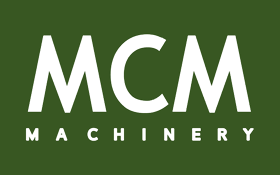- No product in the cart.
Amazon Web Services (AWS) provides a robust suite of tools and services designed to assist businesses build resilient architectures, and one of many foundational elements in this toolkit is the Amazon Elastic Compute Cloud (EC2) Amazon Machine Image (AMI). Understanding the significance of AMIs in building a resilient AWS architecture is crucial for any group seeking to leverage the power of the cloud.
What’s an Amazon EC2 AMI?
An Amazon Machine Image (AMI) is a master image used to launch an occasion in AWS EC2. It consists of the operating system, application code, runtime libraries, and other essential configurations needed to create a virtual server within the cloud. Essentially, an AMI serves as a template for creating new EC2 cases, making certain that each occasion launched from the same AMI is equivalent in configuration and setup.
The Function of AMIs in a Resilient Architecture
1. Consistency and Reliability
One of many primary benefits of utilizing AMIs is the consistency they provide. When deploying applications throughout multiple instances, consistency within the underlying environment is critical. AMIs make sure that every instance starts with the exact same configuration, eliminating variability and reducing the likelihood of environment-related issues. This consistency is vital for sustaining the reliability of applications, particularly in environments where instances are often scaled up or down based mostly on demand.
2. Quick Recovery and Scaling
Within the event of a failure, quick recovery is essential to attenuate downtime and keep service availability. AMIs enable rapid instance replacement by permitting new cases to be launched from a pre-configured image quickly. This capability is particularly valuable in auto-scaling situations, where the number of instances needs to adjust dynamically to meet altering demand. Through the use of AMIs, companies can make sure that new situations are ready to serve visitors immediately upon launch, reducing recovery time and enhancing the overall resilience of the architecture.
3. Automated Deployments and Patching
Automating deployments and applying patches is crucial for maintaining a secure and up-to-date environment. AMIs play a significant function in automation by permitting pre-configured images to be deployed constantly across totally different environments, equivalent to development, testing, and production. When updates or patches are wanted, a new AMI may be created with the required changes, and situations can be up to date seamlessly. This automated approach not only reduces the risk of human error but additionally ensures that security patches are utilized uniformly, enhancing the general resilience and security of the architecture.
4. Catastrophe Recovery and Backup Strategies
Resilient architectures must embrace sturdy disaster recovery (DR) strategies to ensure business continuity within the face of catastrophic events. AMIs are an integral part of DR plans, as they provide a snapshot of the system at a selected level in time. In the event of a disaster, businesses can quickly restore operations by launching new instances from a backup AMI. Moreover, AMIs could be stored across completely different areas, making certain that a copy of the environment is available even when a complete region experiences an outage. This geographic redundancy is a key aspect of a resilient AWS architecture.
5. Cost Efficiency
While resilience typically comes with an related cost, utilizing AMIs may also help manage and even reduce these expenses. By creating optimized AMIs that embody only the required software and configurations, businesses can launch instances which are tailored to their particular needs. This approach not only improves performance but in addition reduces resource utilization, leading to lower operational costs. Additionally, by leveraging spot instances and other cost-saving features in AWS, businesses can further enhance cost efficiency while maintaining resilience.
Best Practices for Using AMIs
To maximize the benefits of AMIs in building a resilient AWS architecture, it is essential to observe best practices:
Regularly Replace AMIs: Keep AMIs updated with the latest patches, software variations, and security configurations.
Use Versioning: Implement versioning for AMIs to track changes and ensure consistency throughout deployments.
Secure AMIs: Apply security best practices when creating AMIs, akin to minimizing the attack surface by only together with essential components.
Test AMIs: Completely test AMIs before deploying them in production to make sure that they function as anticipated under totally different conditions.
Conclusion
In the quest to build a resilient AWS architecture, Amazon EC2 AMIs play a pivotal role. By providing consistency, enabling speedy recovery, facilitating automation, and supporting disaster recovery strategies, AMIs contribute significantly to the overall reliability and efficiency of cloud environments. As organizations proceed to embrace the cloud, leveraging AMIs successfully will be key to maintaining a strong and resilient infrastructure capable of meeting the calls for of modern applications and services.
If you loved this article therefore you would like to obtain more info pertaining to EC2 Image Builder generously visit our web-page.

